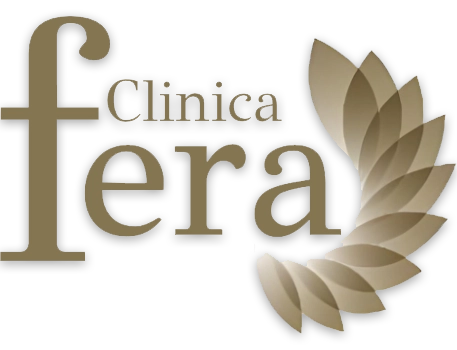What Exactly Is
Liposuction Surgery?
Liposuction, also known as lipoplasty or body contouring surgery, is a cosmetic procedure designed to remove excess fat deposits from specific areas of the body. It aims to reshape and sculpt these areas to improve the overall body contour and proportions. Liposuction is not a weight loss procedure but rather a body sculpting technique.
Types of Liposuction
- Traditional Liposuction: This classic approach involves the use of a thin tube called a cannula, which is inserted through small incisions to suction out the fat.
- Tumescent Liposuction: This technique involves injecting a solution of saline, local anesthesia, and epinephrine into the target area before fat removal. It helps minimize bleeding and provides pain relief.
- Ultrasound-Assisted Liposuction (UAL): This method utilizes ultrasonic energy to liquefy the fat, making it easier to remove. It is particularly effective in fibrous areas.
- Laser-Assisted Liposuction (LAL): In this approach, a laser fiber is used to melt the fat cells before extraction, making the process smoother and less invasive.
- Power-Assisted Liposuction (PAL): PAL employs a mechanical device that vibrates the cannula, facilitating the fat removal process and reducing surgeon fatigue.
Benefits of Liposuction
Liposuction offers several benefits, including:
- Improved Body Contour: Liposuction sculpts the body by selectively removing stubborn fat deposits, resulting in a more balanced and proportionate figure.
- Boost in Self-Confidence: By achieving their desired body shape, individuals often experience an increase in self-esteem and confidence.
- Enhanced Clothing Fit: Liposuction can make clothing fit better, as it reduces excess fat in areas such as the abdomen, thighs, hips, and arms.
- Long-Lasting Results: Once fat cells are removed, they do not regenerate in the same area. However, maintaining a healthy lifestyle is crucial to prevent weight gain in other areas.
Candidates for Liposuction
Liposuction can be an ideal option for individuals who:
- Have localized areas of excess fat resistant to diet and exercise
- Have good skin elasticity to allow for proper post-surgical contouring
- Are in good overall health with no underlying medical conditions that could pose risks during surgery
- Have realistic expectations about the outcomes of the procedure
Preparation for Liposuction
Before undergoing liposuction, it is essential to follow these preparation steps:
- Consultation: Schedule an initial consultation with a board-certified plastic surgeon to discuss your goals, medical history, and determine if you are a suitable candidate.
- Medical Evaluation: Undergo a thorough physical examination and provide your surgeon with a complete medical history, including any medications or supplements you are taking.
- Quit Smoking: If you smoke, it is advisable to stop at least a few weeks before the procedure, as smoking can impede the healing process.
- Medication Adjustments: Your surgeon may recommend adjusting or stopping certain medications or supplements that can increase the risk of bleeding or interfere with anesthesia.
- Fasting: Follow the surgeon’s instructions regarding fasting before the procedure to avoid complications during anesthesia.
Liposuction Procedure
The liposuction procedure typically involves the following steps:
- Anesthesia: The surgeon will administer either local anesthesia, intravenous sedation, or general anesthesia, depending on the extent of the procedure and your comfort level.
- Incisions: Small incisions are made in inconspicuous areas near the treatment site.
- Fat Removal: The surgeon inserts a thin, hollow tube (cannula) through the incisions and uses controlled movements to dislodge and suction out the excess fat.
- Closure: Once the desired contour is achieved, the incisions are closed with sutures or surgical tape.
- Compression Garment: To aid in the healing process and reduce swelling, a compression garment is worn for several weeks post-surgery.
Recovery and Aftercare
After liposuction, it is important to follow these recovery guidelines:
- Rest and Recovery: Take time off work and engage in light activities during the initial recovery period. Avoid strenuous exercises and heavy lifting for several weeks.
- Compression Garments: Wear the recommended compression garment as advised by your surgeon to reduce swelling and support the healing process.
- Medication and Wound Care: Take prescribed medications, such as pain relievers and antibiotics, as instructed. Keep the incision sites clean and follow the surgeon’s guidelines for wound care.
- Follow-up Appointments: Attend all post-operative follow-up appointments to monitor your progress and address any concerns.
Results and Expectations
The final results of liposuction may take several weeks or months to fully manifest. Factors that can influence the outcome include:
- The amount of fat removed
- The body’s natural healing process
- Post-operative care and adherence to guidelines
- Individual variations in skin elasticity
Alternatives to Liposuction
While liposuction is a popular and effective method for body contouring, some alternatives to consider include:
- Non-Surgical Fat Reduction: Procedures such as CoolSculpting and SculpSure use controlled cooling or laser energy to target and eliminate fat cells non-invasively.
- Injectable Treatments: Injectable substances like Kybella can be used to reduce submental fat (double chin) without surgery.
- Body Sculpting Treatments: Techniques like radiofrequency and high-intensity focused ultrasound (HIFU) can help tighten and contour the body without surgery.
Cost of Liposuction
The cost of liposuction can vary depending on several factors, including:
- The surgeon’s experience and reputation
- The complexity of the procedure
- The location of the clinic
- The amount of fat to be removed
- Additional fees for anesthesia, facility charges, and post-operative care
It is essential to discuss the cost with your surgeon during the consultation, as they can provide a personalized estimate based on your specific needs.
Choosing a Liposuction Surgeon
When selecting a liposuction surgeon, consider the following factors:
- Board Certification: Ensure that the surgeon is certified by a recognized board, indicating their expertise and adherence to high standards.
- Experience and Specialization: Look for a surgeon who has extensive experience in performing liposuction procedures and specializes in body contouring.
- Before and After Photos: Review the surgeon’s before and after photos to assess their results and determine if their aesthetic aligns with your goals.
- Patient Reviews and Testimonials: Read reviews and testimonials from previous patients to gauge their satisfaction and overall experience.
- Personal Consultation: Schedule a consultation to discuss your goals, ask questions, and assess the surgeon’s communication style and compatibility.
Conclusion
Liposuction is a cosmetic procedure that offers individuals the opportunity to sculpt their bodies and achieve a more desired physique. By understanding the various techniques, benefits, risks, and recovery process associated with liposuction, individuals can make informed decisions and embark on their body transformation journey with confidence. Remember to consult with a board-certified plastic surgeon to discuss your goals and determine if liposuction is the right option for you.
- No, liposuction is not a weight loss method. It is a body contouring procedure designed to remove localized fat deposits and improve body shape and proportions.
- Liposuction may improve the appearance of cellulite to some extent in the treated areas, but it is not specifically designed to target cellulite. Alternative treatments may be more effective for cellulite reduction.
The fat cells removed during liposuction will not return in the same area. However, it is important to maintain a healthy lifestyle to prevent weight gain, as existing fat cells can still expand in other areas of the body.
- Your surgeon will provide specific guidelines based on your individual case. Generally, light activities can be resumed within a week, but strenuous exercises should be avoided for several weeks to ensure proper healing.
Get In Touch With Us
book@clinicafera.com
Book An Appointment
Book a free consultation to ClinicaFera, simply fill out the form below and we will contact you back regarding the intervention you require.

